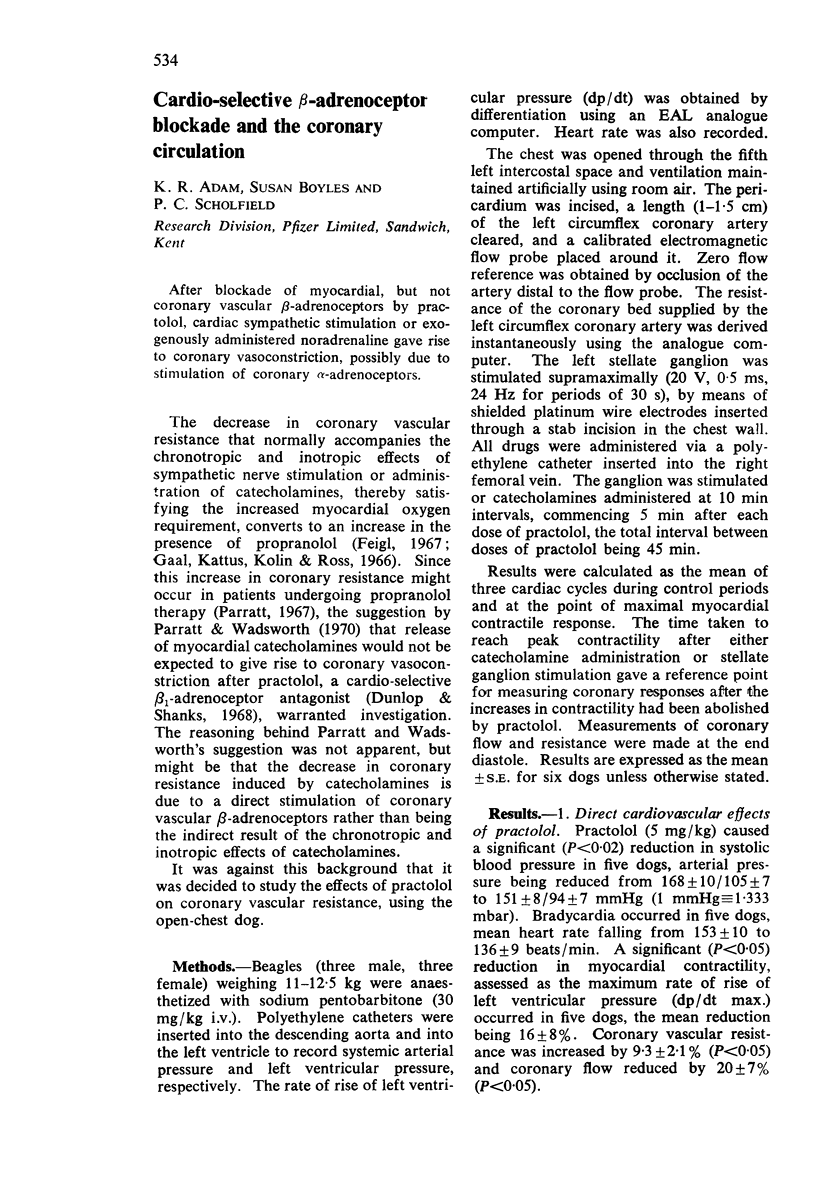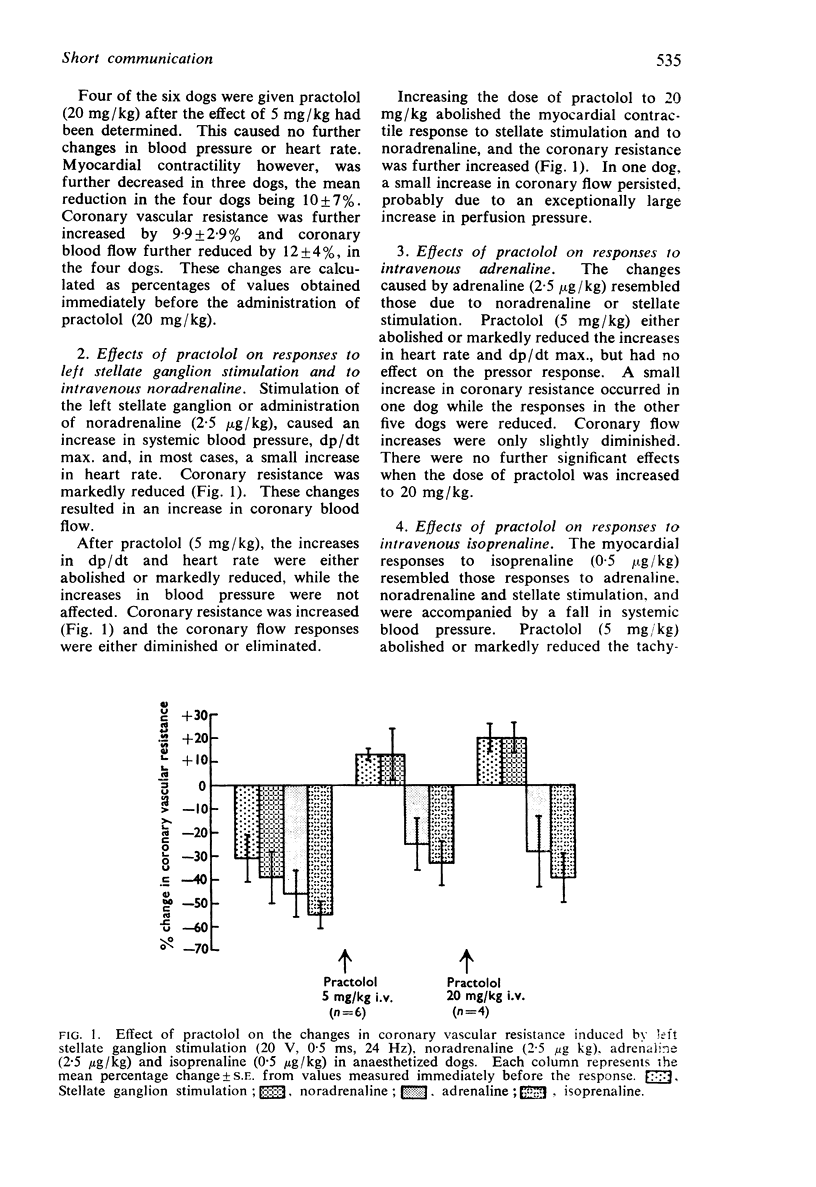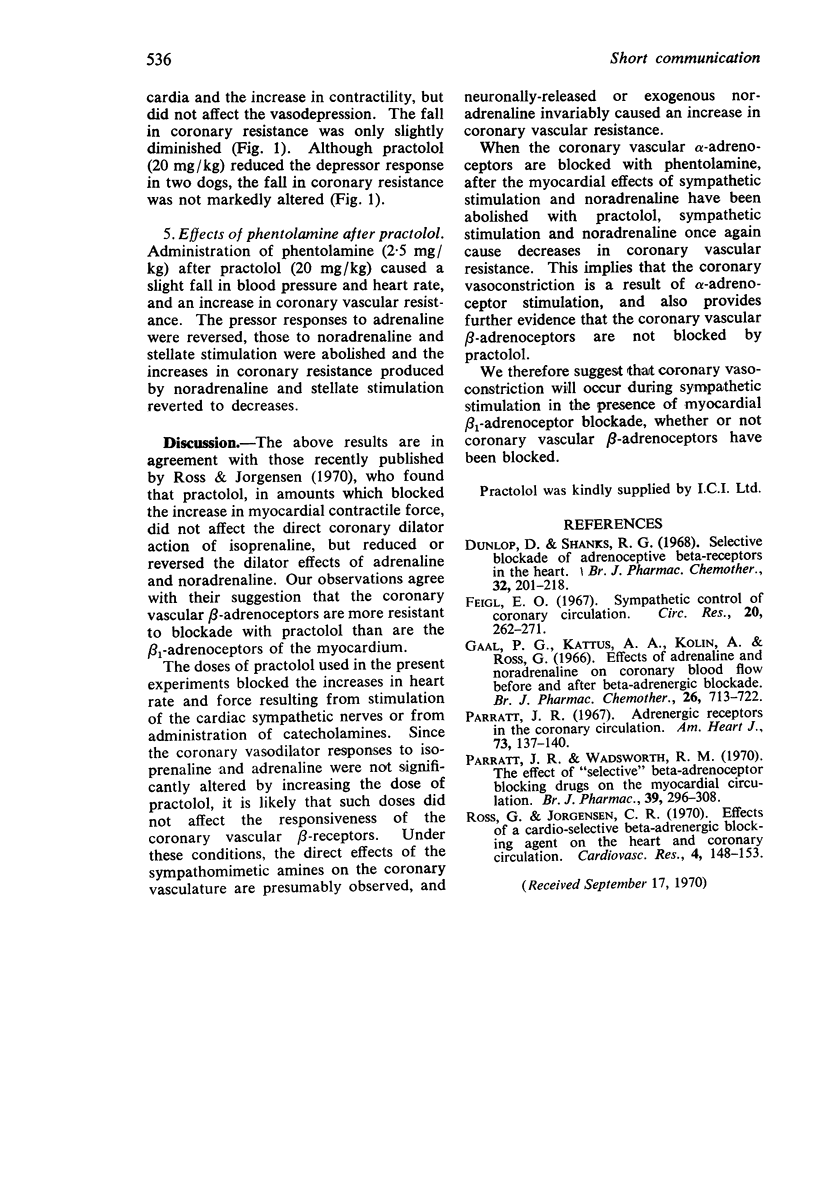Abstract
After blockade of myocardial, but not coronary vascular β-adrenoceptors by practolol, cardiac sympathetic stimulation or exogenously administered noradrenaline gave rise to coronary vasoconstriction, possibly due to stimulation of coronary α-adrenoceptors.
Full text
PDF


Selected References
These references are in PubMed. This may not be the complete list of references from this article.
- Dunlop D., Shanks R. G. Selective blockade of adrenoceptive beta receptors in the heart. Br J Pharmacol Chemother. 1968 Jan;32(1):201–218. doi: 10.1111/j.1476-5381.1968.tb00444.x. [DOI] [PMC free article] [PubMed] [Google Scholar]
- Feigl E. O. Sympathetic control of coronary circulation. Circ Res. 1967 Feb;20(2):262–271. doi: 10.1161/01.res.20.2.262. [DOI] [PubMed] [Google Scholar]
- Gaal P. G., Kattus A. A., Kolin A., Ross G. Effects of adrenaline and noradrenaline on coronary blood flow before and after beta-adrenergic blockade. Br J Pharmacol Chemother. 1966 Mar;26(3):713–722. doi: 10.1111/j.1476-5381.1966.tb01851.x. [DOI] [PMC free article] [PubMed] [Google Scholar]
- Parratt J. R., Wadsworth R. M. The effect of "selective" beta-adrenoceptor blocking drugs on the myocardial circulation. Br J Pharmacol. 1970 Jun;39(2):296–308. doi: 10.1111/j.1476-5381.1970.tb12893.x. [DOI] [PMC free article] [PubMed] [Google Scholar]
- Ross G., Jorgensen C. R. Effects of a cardio-selective beta-adrenergic blocking agent on the heart and coronary circulation. Cardiovasc Res. 1970 Apr;4(2):148–153. doi: 10.1093/cvr/4.2.148. [DOI] [PubMed] [Google Scholar]


